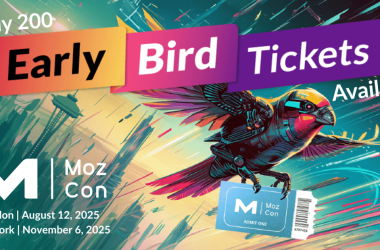
Marketing is shifting away from campaigns that try to fit everyone’s desires. Today, people want content that feels curated for their needs, and generic storytelling doesn’t create connection or loyal consumers.
What do brands that don’t adapt have to risk?
Relevance—which can absolutely kill business.
Artificial intelligence has made hyper-personalized storytelling possible. For companies competing in digital-first markets, this isn’t just a trend. It’s the new expectation. Leaders need to understand how AI shapes storytelling, why it matters, and how to prepare their teams to stay competitive.
Quick Takeaways
- Hyper-personalization uses real behavior to guide messaging rather than assumptions.
- AI makes individualized storytelling scalable without exhausting creative resources.
- Personalized storytelling deepens engagement, strengthens conversion, and builds loyalty.
- Real-time adaptation gives brands credibility and trust with their audiences.
- Businesses that delay adopting these methods risk falling behind competitors already embracing them.
Why Storytelling Needs To Change
Storytelling has always been conducive to brand-building. Businesses have long used stories to connect values, culture, and products to their audiences.
In the past, stories were broad and designed for the widest possible appeal. That made sense when marketing channels were fewer and consumer expectations were simpler.
In the modern world, the environment is completely different. Audiences interact with brands through mobile devices, streaming platforms, newsletters, and countless digital touchpoints. Every interaction produces data about preferences and intent. Delivering one generic narrative across these touchpoints no longer resonates. Instead, it feels out of step with how people engage online.
Hyper-personalization is a way forward.
Brands can create multiple variations of a story that feel aligned to different audience needs. This shift moves beyond inserting a first name into an email—it’s about shaping narratives that make sense for different personas, industries, or buying cycles.
How AI Powers Hyper-Personalization
Scaling this kind of personalization would be impossible to do alone. AI systems allow marketing teams to process large amounts of behavioral and demographic data, spotting patterns and identifying what type of content works best for different groups.
Capabilities That Enable Personalized Storytelling:
- Data-driven insights: AI tools analyze browsing, search, and purchase activity to show what audiences actually care about.
- Real-time adjustments: Messages can shift based on immediate engagement, keeping campaigns relevant.
- Content variation: Large-scale testing of subject lines, copy, and visuals helps refine what resonates with specific audience types.
- Efficiency gains: Teams spend less time on guesswork and more time on creative direction.
These capabilities allow businesses to craft narratives that feel relevant to each person without overwhelming marketing resources.

The Impact on Engagement and Conversion
Hyper-personalized storytelling doesn’t just sound good on paper—it produces measurable results. Engagement improves when audiences see content aligned with their interests. Click-through rates and time spent on site increase when messaging feels personally relevant. Conversion rates rise when stories are linked to real buying signals rather than assumptions.
How Personalization Shapes Business Results:
- Higher engagement: Personalized storytelling keeps audiences invested in content for longer.
- Improved conversion: Narratives matched to intent shorten the path to purchase.
- Retention growth: When audiences feel understood, they return to brands more consistently.
- Brand equity: Trust strengthens when messages reflect actual audience needs.
For B2B brands, these outcomes extend beyond immediate sales. They help establish long-term relationships where decision-makers see the brand as aligned with their priorities.
Balancing Scale With Consistency
One of the challenges of hyper-personalized storytelling is maintaining consistency while producing variations. AI can generate insights and recommend adjustments, but businesses need frameworks to ensure messages remain aligned with the larger brand voice. Without clear guidelines, personalization can drift into fragmentation.
The most effective strategies combine scalable technology with clear editorial standards. By defining tone, values, and guardrails for narratives, brands can personalize without diluting their core identity. This balance ensures personalization enhances the brand rather than confusing the audience.
Preparing Teams for Change
Hyper-personalized storytelling isn’t only a technology issue—it’s also about people and processes. Teams need to shift how they approach campaign planning, creative development, and measurement. Instead of designing one large campaign, marketers may build modular stories that adapt to different audience groups.
Leaders should prepare their teams for a more iterative approach where content performance is constantly reviewed and adjusted. Skills in data analysis, customer segmentation, and experimentation are becoming as essential as traditional creative expertise.
Measuring Success in a New Landscape
With personalization, traditional metrics alone are not enough to evaluate success. Marketers must look at both engagement and sentiment. Tracking open rates and conversions still matters, but equally important is understanding how audiences feel about the personalized content.
B2B organizations in particular benefit from analyzing long-term impact. Does personalized storytelling improve retention among enterprise buyers? Does it strengthen relationships across multiple stakeholders in a buying committee? These questions should guide measurement strategies.
What Comes Next?
The role of AI in brand storytelling will continue to expand as technology evolves. Capabilities like predictive analytics and generative content creation are still developing but hold clear potential for shaping the next wave of personalized marketing. Businesses that build strong foundations in personalization today will be better positioned to adapt as tools advance further.
Use AI to Tell Your Story
Hyper-personalized storytelling is changing how brands connect with their audiences. It aligns messages with real behavior, scales efficiently through AI, and produces measurable gains in engagement and loyalty. Businesses that invest in this approach are setting themselves up for stronger relationships and sustainable growth.
If you are ready to get more traffic to your site with quality content that’s consistently published, check out our Content Builder Service and set up a consultation. Get started today and generate more traffic and leads for your business.






